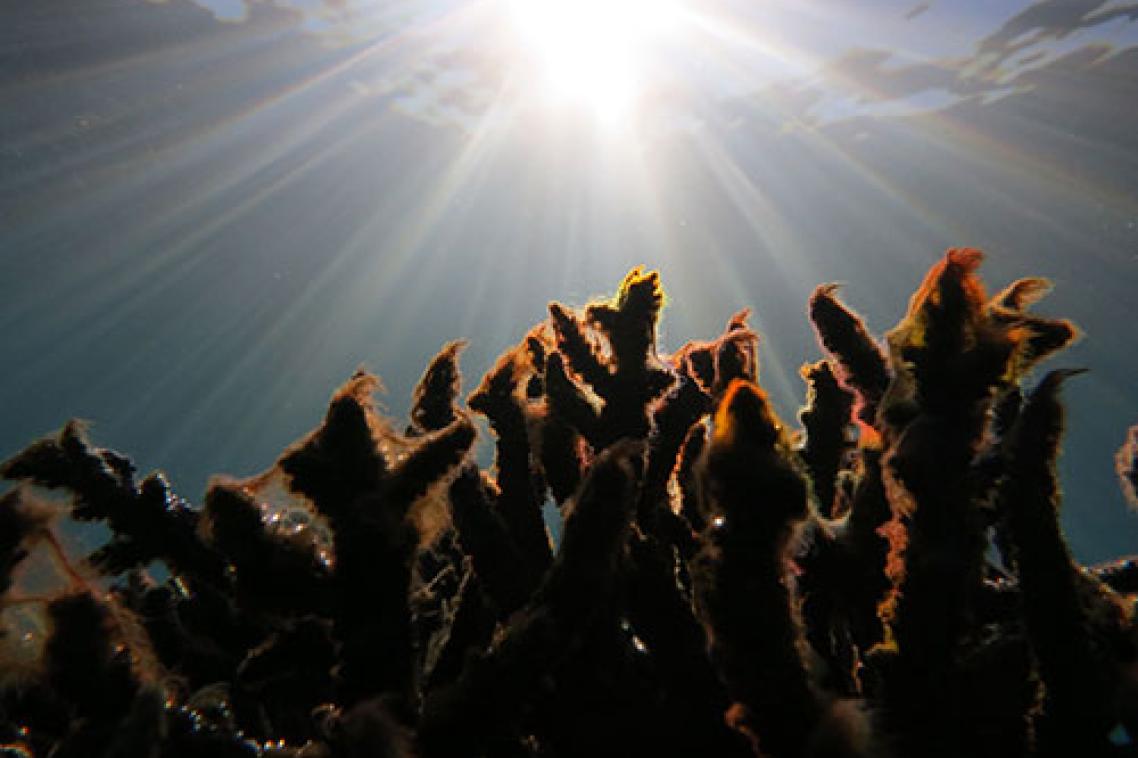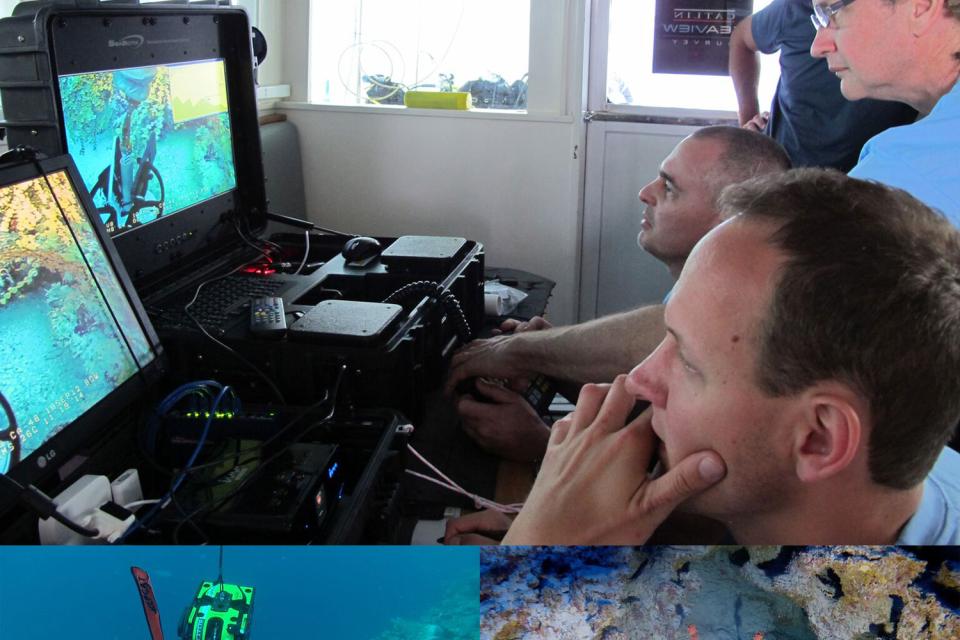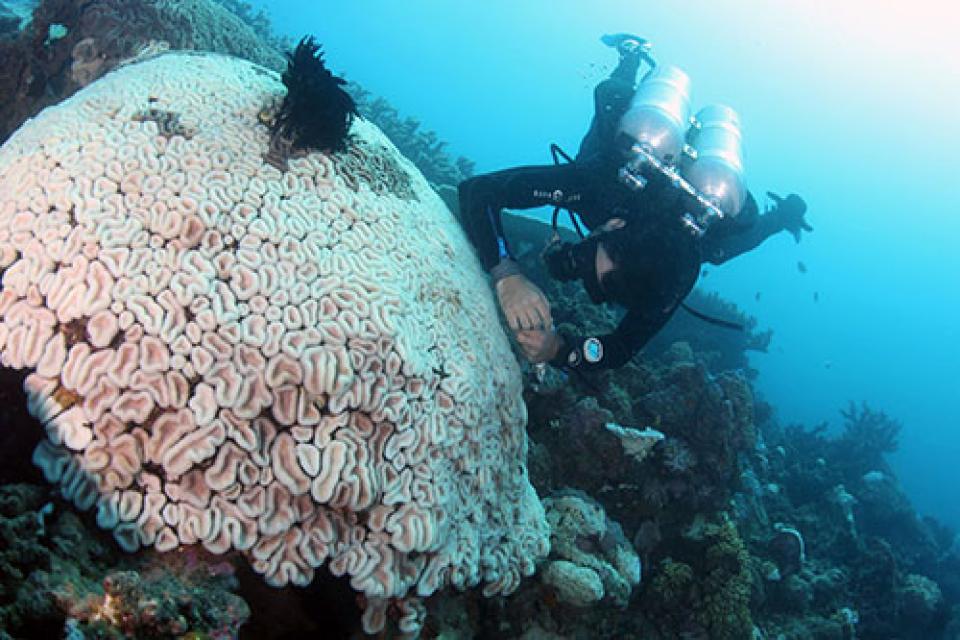Coral bleaching on the Great Barrier Reef runs deep

A team of international marine scientists working with The University of Queensland has found evidence to suggest the 2016 coral bleaching on the Great Barrier Reef also affected deep reefs.
Deep reefs are often considered a refuge from thermal anomalies caused by global ocean warming, but the research highlights limitations to this role and argues that both shallow and deep reefs are under threat of mass bleaching events.
UQ Global Change Institute Director Professor Ove Hoegh-Guldberg said the study, supported in part by the ARC Centre of Excellence for Coral Reef Studies, emphasised the unfortunate vulnerability of the Great Barrier Reef.
“The study details how the impacts of this bleaching did lessen over depth, but were still substantial even on the deep reef,” Professor Hoegh-Guldberg said.
"We already established that the refuge role of deep reefs is generally restricted by the limited overlap in species with the shallow reef.
“However, this adds an extra limitation by demonstrating that the deep reefs themselves are also impacted by higher seawater temperatures.”
Dr Pedro Frade from the Centre of Marine Sciences at the University of Algarve said the scientists were astounded to find bleached coral colonies all the way down to 40 metres.
“It was a shock to see that the impacts extended to these dimly-lit reefs, as we were hoping that their depth may have provided protection from this devastating event,” he said.
The Great Barrier Reef is known to harbor extensive areas of deep coral reefs, however given their depth these reefs are notoriously difficult to study.

Using remotely operated vehicles, the team deployed sensors down to 100 metres to characterise how temperature conditions at depth differ from those in the shallow reef.
Co-author Dr Pim Bongaerts from the California Academy of Sciences said that during the bleaching event, upwelling cold-water initially provided cooler conditions on the deep reef.
A team of divers then conducted surveys during the height of bleaching, across several sites on the northern Great Barrier Reef.
They noted that overall, major bleaching and mortality affected almost a quarter of corals at 40 metres, while confirming previous reports that nearly half the corals were severely affected at the shallower depths.

The study is published in Nature Communications, DOI 10.1038/s41467-018-05741-0 (2018).
Above image: Deploying a temperature logger; photo by Norbert Englebert
Left: Pedro Frade samples a polyp of a completely bleached lobophyllia coral colony in the shallows; photo by Pim Bongaerts
Pedro Frade samples a polyp of a completely bleached
Lobophyllia
coral colony in the shallows.
Pedro Frade samples a polyp of a completely bleached
Lobophyllia
coral colony in the shallows.
Media: Professor Ove Hoegh-Guldberg, oveh@uq.edu.au; Dr Pedro Frade, prfrade@ualg.pt; Dr Pim Bongaerts, pbongaerts@calacademy.org.
Related articles

Thousands of Queensland reef photos lead to worldwide change

From war-torn Liberia to the UQ Law School: a graduate’s inspiring family legacy
Media contact
UQ Communications
communications@uq.edu.au
+61 429 056 139
